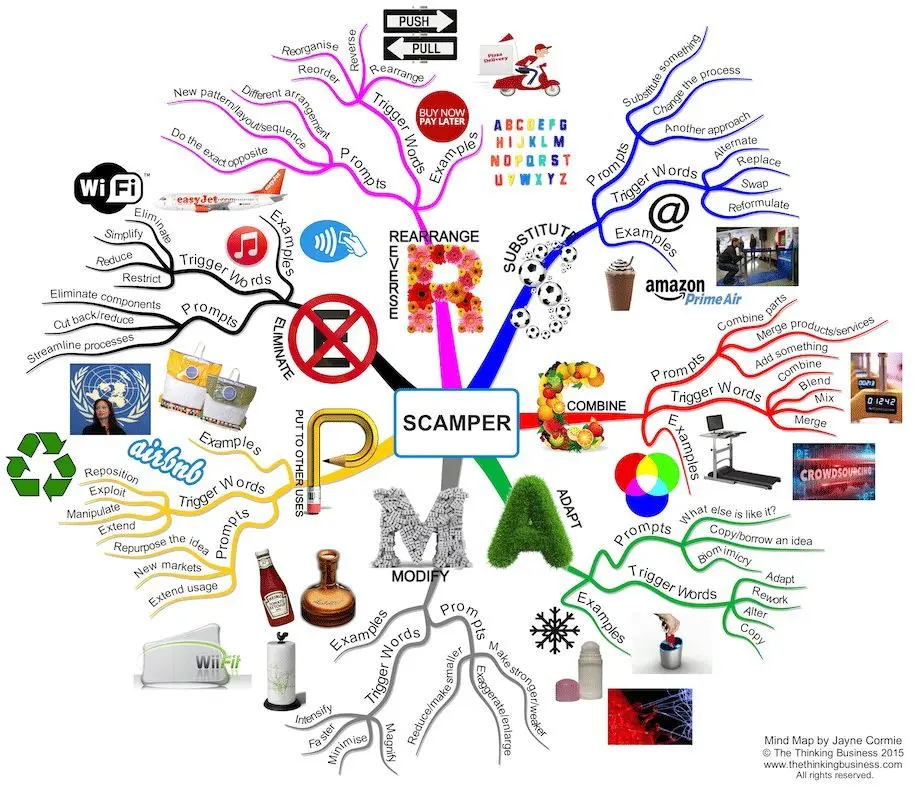In the complexity of work and life, we are often faced with the need to clarify the situation, clear steps. At this time, a powerful auxiliary tool - flowchart, it is particularly important. Flowchart, in short, is a graphical means to show a series of orderly steps, decision-making branches and operational logic of the tool. It not only visualizes the abstract thinking process, but also greatly facilitates the transfer of information and understanding, making complex problems intuitive and easy to understand.
1. What is Flowchart?
Imagine being faced with a large project plan or a series of intricate business processes and often feeling at a loss for words. A flowchart is like a key that unlocks the door to clarity and organization. Through well-designed symbols and lines, flowcharts integrate ideas and information that are otherwise scattered and disorganized into a clear and logical picture. These images are not only easy to understand, but also stimulate creativity and collaboration in your team, ensuring that every task moves forward along the right path.

Image from:Flowchart, Tips dan Cara Praktis Membuatnya - Dicoding Blog
2. Importance of flowchart
In the field of project management, flowchart is an indispensable communication tool. It can help project managers clearly plan project phases, allocate tasks and resources, monitor progress and risks, and ensure that the project can be completed on time and in quality. In the field of software development, flowcharting is a powerful assistant for requirement analysis, system design and test verification, which can help developers understand business logic, optimize code structure and improve software quality. In addition, flowcharts also play an irreplaceable role in business process optimization, quality management, risk assessment and other areas. With its unique visualization advantages, it has become a bridge that connects theory and practice and improves work efficiency and quality.
3. Flowchart solves five complex problems
A picture is worth a thousand words: clearly define processes and steps
A flowchart presents every step and decision point in a process clearly through graphical representation. It uses standardized symbols (e.g., rectangles for action steps, diamonds for decision points, arrows for process direction, etc.) to build the logical framework of the process, making the entire process clear at a glance. This kind of disassembly not only reduces the difficulty of understanding, but also makes each step of the operation concrete and feasible.
For example, in the field of customer service, an efficient process is crucial for improving customer satisfaction. Through the flowchart, we can break down the customer service process into multiple links such as receiving inquiries, recording problems, providing solutions, and tracking feedback. Each link has a clear responsibility person and completion standard, so that team members can clearly know their position and responsibilities in the process. In this way, both new employees and seasoned veterans can quickly get up to speed and ensure high quality and efficiency in customer service.

Image from:Gadgets Beat - Latest Tech News, Tips and How-to Guides
In the field of product development, flowcharts also play an indispensable role. From market research, requirement analysis, design and development, testing and validation to product launch, each stage is full of challenges and variables. Through flowcharting, we can break down the product development process into a series of specific tasks and time nodes to ensure that each step can be pushed forward according to plan. At the same time, flowcharting helps team members understand the overall framework and logical relationships of product development, and facilitates cross-departmental communication and collaboration. In this way, the product development process becomes more organized and efficient, greatly reducing the risk of project failure.
A powerful tool to reduce misunderstandings and increase efficiency: Misunderstanding and miscommunication are common problems in teamwork. And the emergence of flowcharts provides an effective solution to these problems. Through flowcharts, we can present complex processes to all team members in an intuitive and easy-to-understand way, reducing misunderstandings and conflicts caused by differences in understanding. At the same time, process mapping also helps team members to clearly see their positions and responsibilities in the process, so that they can be more focused on executing their own tasks. This clarity not only improves execution efficiency, but also enhances team cohesion and combat effectiveness.
Bottlenecks have no place to hide: process mapping to help optimize processes
On the journey of process execution, we will inevitably encounter various bottlenecks, which are like stumbling blocks on the road, hindering the smooth progress of the process. Insufficient resources and inefficiencies are particularly common, not only slowing down the overall progress, but also negatively affecting the quality of the project and the morale of the team. However, it is these challenges that fuel the urgent need for process optimization. In this process, process mapping, with its unique perspective and powerful analytical capabilities, has become an important partner for us to break through bottlenecks and improve efficiency.
Bottlenecks are stumbling blocks on the path of a process. Insufficient resources are one of the common bottlenecks in process execution. When a link requires more resources than are available, it becomes a bottleneck for the entire process, preventing subsequent steps from moving forward on time. In addition, inefficiency of the link is also a problem that cannot be ignored. This may be due to poor process design, redundant operational steps, or lack of competence of team members. If these problems are not solved in time, they will accumulate like a snowball and eventually affect the success of the whole project.
Flowcharts provide a powerful support with their unique perspective and visualization. Through flowcharting, we can clearly see each link in the process and the relationship between them. When there is a delay or stagnation in a certain link, the flowchart will immediately expose it, allowing us to quickly locate where the bottleneck is. This immediate feedback mechanism allows us to take timely action to avoid amplifying the problem.
Process mapping leads to optimized change. Once bottlenecks are identified, we can use the flowchart to develop an optimization strategy. Specifically, we can optimize the process by reordering steps, increasing resources, simplifying operational steps, or improving team capabilities. For example, in the case of insufficient resources, we can reallocate resources or seek external support; in the case of inefficient links, we can redesign the process or introduce new tools and technologies to improve efficiency. These optimization measures can not only effectively solve current bottlenecks, but also provide valuable experience for future process improvement.
Wisdom Under the Decision Tree: Flowcharting for Logical Decision Making
Process mapping is not only a powerful assistant for process management, but also an important tool for decision support. It graphically presents different decision paths and their possible consequences in a clear manner. This visualization enables decision makers to see at a glance the different outcomes of different choices and to evaluate the advantages and disadvantages of various options in a more comprehensive way. In addition, flowcharts can help decision makers to sort out the logic of decision making, clarify the key points and influencing factors of decision making, and reduce blindness and arbitrariness.
**Sorting out the logic, weighing the pros and cons, flowcharting has a huge role to play in complex decision making.**Flowcharts play an irreplaceable role in complex decision-making processes. First of all, it graphically breaks down a complex decision-making problem into several simple sub-problems, enabling decision-makers to analyze and solve them one by one. This decomposition not only reduces the difficulty of decision-making, but also improves the accuracy of decision-making. Second, the flowchart can clearly show the logical relationship between different decision paths and help decision makers understand the mutual influence and constraints between options. This global perspective enables decision makers to weigh the pros and cons more comprehensively and make more reasonable decisions. Finally, flowcharts can also simulate the consequences of different decision paths, providing decision makers with a basis for prediction and evaluation. This foresight enables decision makers to anticipate and respond to potential risks and challenges, and improves the robustness of their decisions.

Image from:homme d’affaire dans le tête fabrication décision entre droite ou faux, résoudre une problème, décider et dilemme, décision fabrication ou logique pensée, correct ou Incorrect option, critique en pensant 21767517 Art vectoriel chez Vecteezy
Bridging the Gap: Process Mapping for Cross-Departmental Collaboration
Interdepartmental projects involve collaboration across multiple departments and areas of specialization, with a large amount of information and a long chain of communication. In this process, information asymmetry has become a common problem. There are often knowledge barriers and cognitive differences between different departments, leading to poor information transfer and understanding bias. At the same time, unclear responsibilities are also one of the major causes of communication barriers. In the process of project promotion, if the division of responsibilities between departments is not clear and the distribution of tasks is unreasonable, it is easy to produce the phenomenon of shirking responsibilities, which affects the overall progress of the project.
Flowchart is a common language to promote communication and cooperation. Facing the dilemma of cross-departmental communication, flowchart has become a common language between different departments with its intuitive and standardized features. Through the flowchart, each department can clearly see the overall process of the project, key nodes and their respective areas of responsibility. This graphical expression not only reduces communication costs, but also improves communication efficiency. More importantly, as an objective and neutral tool, flowchart can reduce the interference of subjective factors and promote objective discussion and rational decision-making among departments.

Image from:4 ways to achieve cross-departmental collaboration and teamwork - The Business Journals (bizjournals.com)
Evolving Intelligence: Process Mapping Leads to Process Innovation
The core value of process mapping as an engine for continuous improvement lies in its dynamism and iterability. As the project progresses and the external environment changes, the original process may reveal deficiencies or bottlenecks. At this point, it is especially important to review the process map on a regular basis. Through in-depth analysis of each link in the process, we can identify potential improvement points, such as simplifying operational steps, optimizing resource allocation, and reducing waiting time. The implementation of these improvements not only enhances process efficiency, but also reduces operating costs and enhances the competitiveness of the organization.
Catalyst for innovative thinking: In addition to being a tool for continuous improvement, process mapping is also a catalyst for innovative thinking. In the process of drawing and reviewing process maps, we tend to think out of the traditional mode of thinking and look at the process from a new perspective. This shift in perspective helps us discover blind spots in the process and inspires new ideas and thoughts. For example, by redesigning the process through reverse thinking, we can find more efficient and concise solutions; through cross-border integration, we can introduce advanced concepts and technologies from other fields into the process to create a completely new process model. These innovative attempts can not only enhance the organization’s innovation capability, but also bring unexpected value and benefits to the organization.
In a rapidly changing market environment, maintaining the flexibility and adaptability of the process map is key to the continued growth of the organization. Constant changes in the market environment, customer needs, technological innovations, and other factors require that organizations must be able to respond quickly and adapt their processes. Therefore, process maps should be designed with a certain degree of flexibility and scalability so that they can be easily modified and updated when needed. At the same time, the organization should also establish a culture of continuous learning and improvement, encouraging team members to actively participate in the review and updating of the flowchart, and working together to promote continuous improvement and innovation in the organization.
4. The Multifaceted Solution to Complex Problems
In the complex and changing business environment, flowchart has become a multi-faceted problem solver with its unique advantages. As a decision support tool, it visualizes the decision path and facilitates scientific decision-making; in cross-departmental cooperation, flowcharting serves as a common language, facilitates the flow of information and clarification of responsibilities, and strengthens teamwork.
At the same time, process mapping is a driving force for continuous improvement. Through regular review and updating, it taps the potential of process optimization and promotes organizational efficiency. Its graphical representation stimulates innovative thinking, guides teams to explore new process models and solutions, and injects vitality into organizational development.
More importantly, in the face of a rapidly changing market environment, process mapping demonstrates a high degree of flexibility and adaptability, ensuring that the organization is able to respond quickly and seize opportunities. This ability is crucial for organizations to stay ahead in a competitive market.
Conclusion
In a complex biz landscape, flowcharts excel as versatile problem solvers. They aid decision-making, streamline cross-dept communication, & enhance teamwork. Process mapping drives ongoing improvement, optimizing processes & boosting efficiency. Its visual nature sparks innovation, guiding new models & solutions. Critically, it adapts swiftly to market changes, empowering orgs to seize opportunities & stay competitive.







